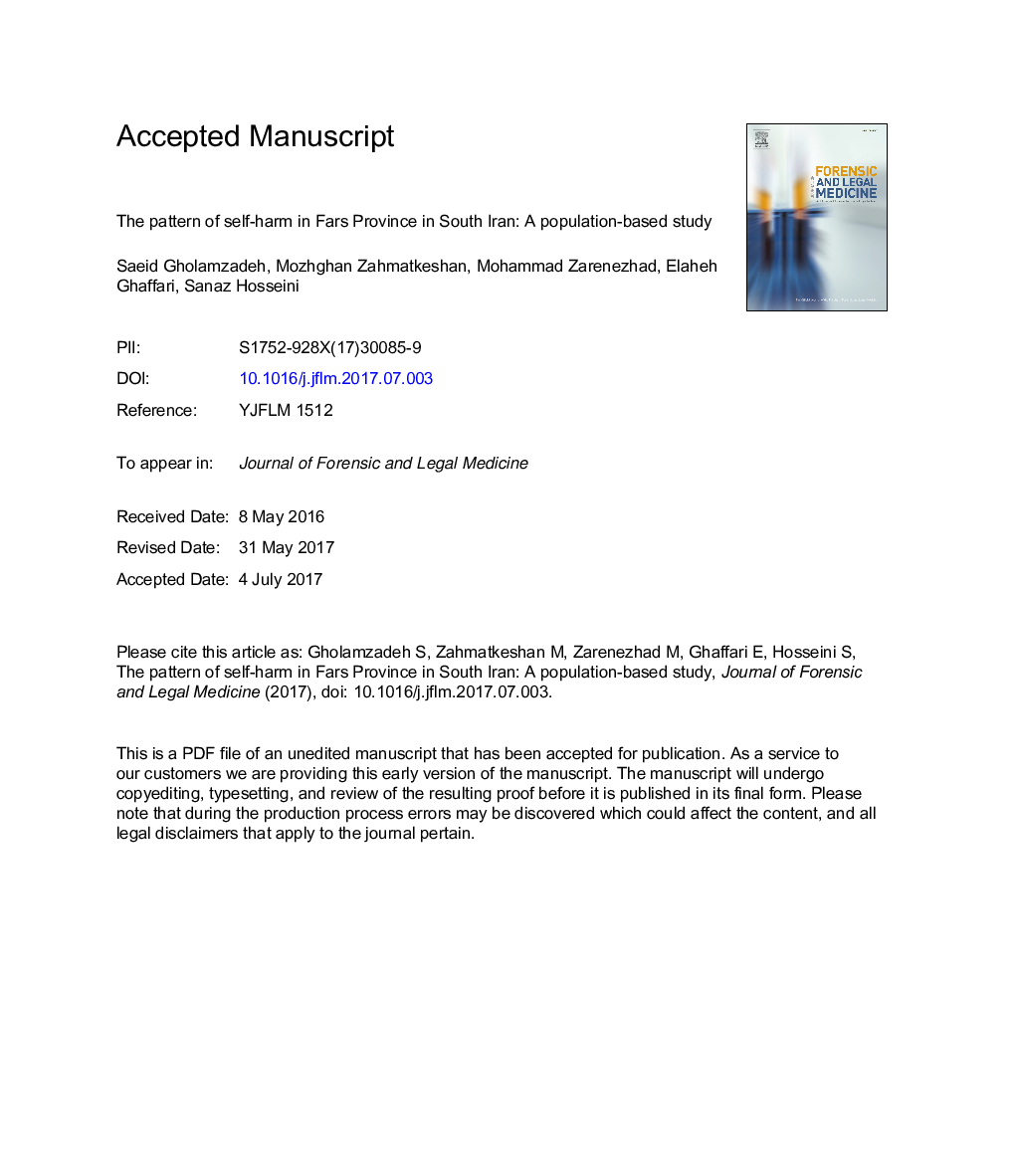| Article ID | Journal | Published Year | Pages | File Type |
|---|---|---|---|---|
| 4760634 | Journal of Forensic and Legal Medicine | 2017 | 16 Pages |
Abstract
Non-suicidal self-harm includes cutting, scratching, burning and minor overdosing. There have been few studies that have examined the rate and pattern of self-harm among different individuals of the society. We performed a population-based study to determine different aspects of non-suicidal self-harm in cases referred to legal medicine organization of Fars Province and south Iran. In a population-based longitudinal survey, we applied data from cases referred to legal medicine organization of Fars province. The survey included questions about the history, method, frequency, age of onset and help-seeking for non-suicidal self-harm. The data about non-suicidal self-harm were collected since 2007 to 2011 and analyzed using students' T-test for continuous data and Ï2 for binary or categorical data using SPSS ver. 21.0. Totally 2166 individuals were diagnosed who had ever harmed themselves. Self-injuries such as cutting, scratching and self-hitting were the most common forms of non-suicidal self-harm (83.2%). The mean age of onset was 25.7 ± 2.6 years. Self-injury was more frequent in males and individuals with lower education levels mostly unemployed. The most frequent injury site was posterior side of the body for example shoulders (157; 9.8%) and the most type of the injury was bruise in 398(55.26%) cases. Hard objects (1197; 55.26%) were the most used devices for self-injury followed by cutting and sharp devices. Among those who reported non-suicidal self-harm, 56% had sought help while self-injury. We found a high prevalence of non-suicidal self-harm in different individuals of the society in Fars province since 2007 to 2011. Many mental-health symptoms as well as legal and financial gains should be evaluated for any association with this behavior.
Related Topics
Life Sciences
Biochemistry, Genetics and Molecular Biology
Genetics
Authors
Saeid Gholamzadeh, Mozhghan Zahmatkeshan, Mohammad Zarenezhad, Elaheh Ghaffari, Sanaz Hoseni,
